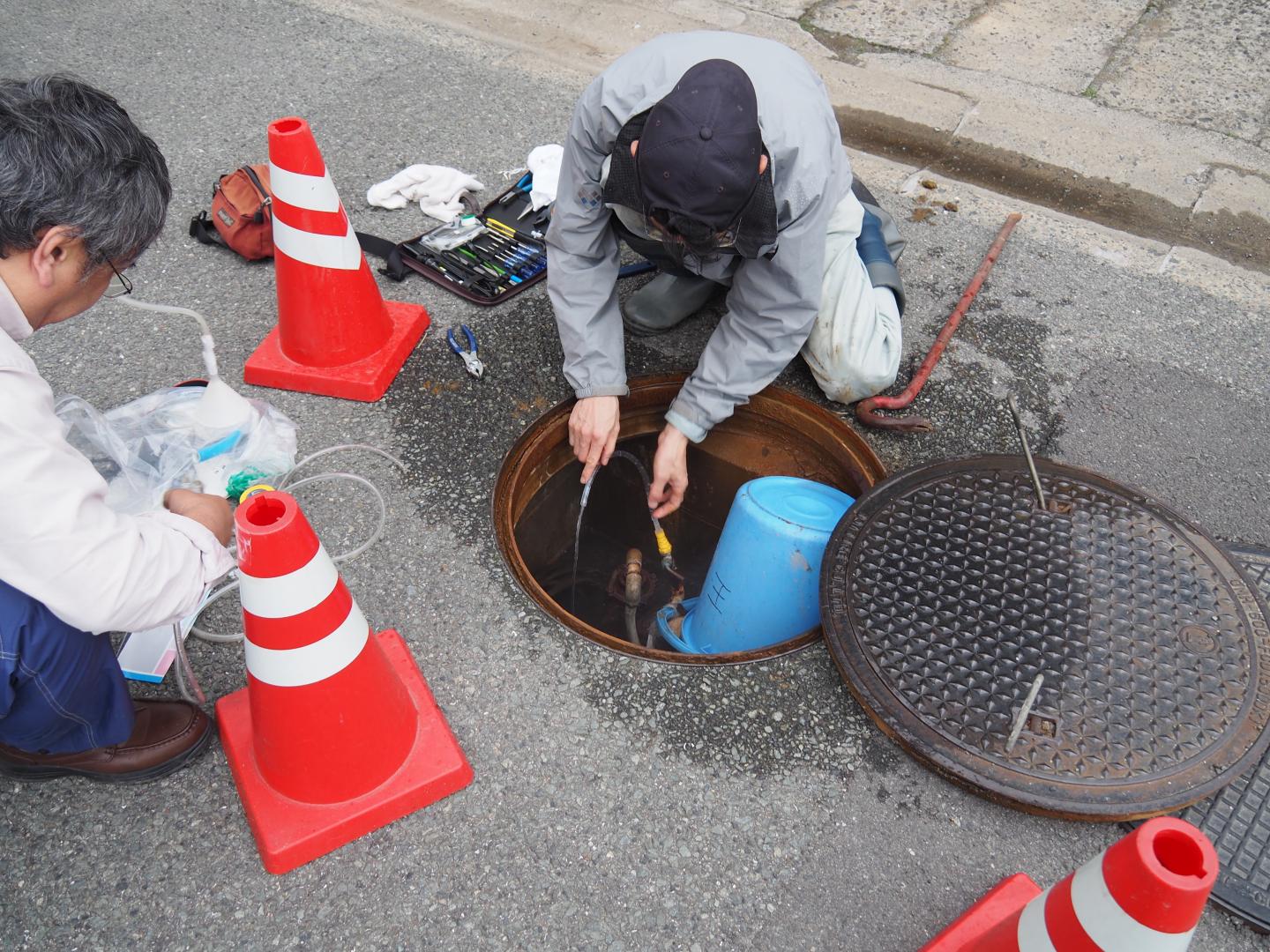
Credit: 2016 Yuji Sano
Japanese researchers have revealed a relationship between helium levels in groundwater and the amount of stress exerted on inner rock layers of the earth, found at locations near the epicenter of the 2016 Kumamoto earthquake. Scientists hope the finding will lead to the development of a monitoring system that catches stress changes that could foreshadow a big earthquake.
Several studies, including some on the massive earthquake in Kobe, Japan, in 1995, have indicated that changes to the chemical makeup of groundwater may occur prior to earthquakes. However, researchers still needed to accumulate evidence to link the occurrence of earthquakes to such chemical changes before establishing a strong correlation between the two.
A team of researchers at the University of Tokyo and their collaborators found that when stress exerted on the earth's crust was high, the levels of a helium isotope, helium-4, released in the groundwater was also high at sites near the epicenter of the 2016 Kumamoto earthquake, a magnitude 7.3 quake in southwestern Japan, which caused 50 fatalities and serious damage.
The team used a submersible pump in deep wells to obtain groundwater samples at depths of 280 to 1,300 meters from seven locations in the fault zones surrounding the epicenter 11 days after the earthquake in April 2016. They compared the changes of helium-4 levels from chemical analyses of these samples with those from identical analyses performed in 2010.
"After careful analysis and calculations, we concluded that the levels of helium-4 had increased in samples that were collected near the epicenter due to the gas released by the rock fractures," says lead author Yuji Sano, a professor at the University of Tokyo's Atmosphere Ocean Research Institute.
Furthermore, scientists estimated the amount of helium released by the rocks through rock fracture experiments in the laboratory using rock samples that were collected from around the earthquake region. They also calculated the amount of strain exerted at the sites for groundwater sample collection using satellite data. Combined, the researchers found a positive correlation between helium amounts in groundwater and the stress exertion, in which helium content was higher in areas near the epicenter, while concentrations fell further away from the most intense seismic activity.
"More studies should be conducted to verify our correlation in other earthquake areas," says Sano. "It is important to make on-site observations in studying earthquakes and other natural phenomena, as this approach provided us with invaluable insight in investigating the Kumamoto earthquake," he adds.
###
Journal article:
Yuji Sano, Naoto Takahata, Takanori Kagoshima, Tomo Shibata, Tetsuji Onoue & Dapeng Zhao, "Groundwater helium anomaly reflects strain change during the 2016 Kumamoto earthquake in Southwest Japan", Scientific Reports
URL: https://dx.doi.org/10.1038/srep37939
DOI: 10.1038/srep37939
Collaborating institutions:
Kyoto University, Kumamoto University and Tohoku University
Links:
Atmosphere and Ocean Research Institute, The University of Tokyo
Research contact:
Professor Yuji Sano
Atmosphere and Ocean Research Institute, The University of Tokyo
5-1-5 Kashiwanoha, Kashiwa, Chiba 277-8564, Japan
Tel: +81-4-7136-6100
Fax: +81-4-7136-6067
Email: [email protected]
Press officer contact:
Yoko Ogawa
Press Office, Atmosphere and Ocean Research Institute, The University of Tokyo
Kashiwanoha 5-1-5, Kashiwa, Chiba 277-8564, Japan
Tel: +81-4-7136-6430
Email:[email protected]
Funding:
This study was partly supported by the Ministry of Education, Culture, Sports, Science and Technology (MEXT) of Japan, under its Earthquake and Volcano Hazards Observation and Research Program.
About the University of Tokyo:
The University of Tokyo is Japan's leading university and one of the world's top research universities. The vast research output of some 6,000 researchers is published in the world's top journals across the arts and sciences. Our vibrant student body of around 15,000 undergraduate and 15,000 graduate students includes over 2,000 international students. Find out more at http://www.u-tokyo.ac.jp/en/ or follow us on Twitter at @UTokyo_News_en.
Media Contact
Yoko Ogawa
[email protected]
81-471-366-430
@UTokyo_News_en
http://www.u-tokyo.ac.jp
############
Story Source: Materials provided by Scienmag





